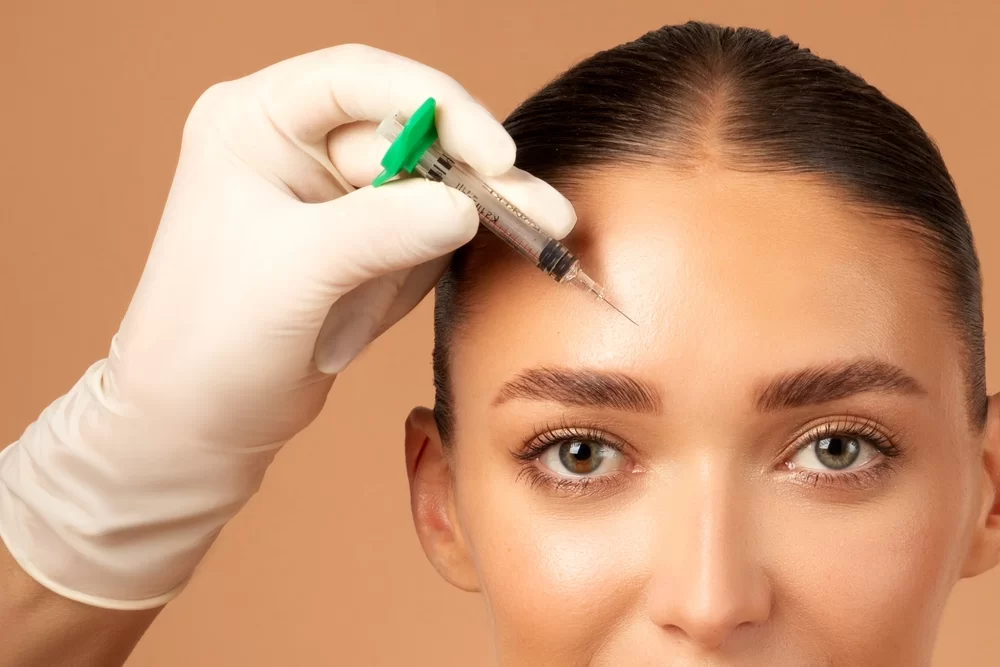PRP Treatment

Modern plastic surgery and aesthetic applications have advanced to improve various physical imperfections, from bone structure to skin conditions and body weight issues. Among these, skin rejuvenation techniques and anti-aging treatments have become increasingly popular.
How is PRP Different from Botox and Dermal Fillers?
Botox and dermal fillers are temporary skin rejuvenation methods. These treatments do not treat wrinkles but rather conceal them for a certain period.
Botox temporarily paralyzes muscles, delaying signs of aging for a few months. However, PRP (Platelet-Rich Plasma) therapy is a more comprehensive treatment that not only prevents skin imperfections but also treats and eliminates them.
PRP treatment involves concentrating healing factors found in a patient’s own blood through laboratory procedures and applying them to the skin in multiple sessions.
How is PRP Solution Obtained?
To obtain PRP solution, a sample of the patient’s blood is drawn and centrifuged at high speed. This process separates different blood components based on their weight, isolating the platelets needed for PRP therapy.
How Does PRP Work?
Platelets are known as healing factors. They play a crucial role in wound healing, stopping bleeding, and repairing damaged blood vessels. PRP therapy was initially used to prevent dental implant failure caused by gum deterioration. Over time, its applications expanded to various medical and aesthetic fields.
Why Should PRP Treatment Be Administered by a Specialist?
The concentration of healing factors in PRP solution must be at an optimal level. Poorly centrifuged blood results in low-quality PRP, prolonging treatment time and reducing effectiveness. Conversely, an excessively concentrated PRP solution may cause adverse effects. For these reasons, PRP treatment should always be performed by an experienced specialist.
What Skin Issues Can PRP Treat?
PRP therapy is primarily used for skin aging and pigmentation issues. It is effective in treating:
- Acne scars and pits
- Sunspots
- Dark circles and puffiness under the eyes
- Wrinkles on the forehead, crow’s feet, and lip lines
- Nasolabial folds (lines running from the nose to the mouth)
PRP can also be applied to the neck and décolletage to reduce wrinkles and freckles. Additional benefits include skin hydration, firmness, brightness, and improved resistance to sun damage.
PRP treatment can also be applied to burn scars on the arms and legs, improving the skin’s overall texture and appearance.
Laser-Assisted PRP Treatment
Laser-assisted PRP combines laser treatment with PRP application. First, a laser is used to trigger skin regeneration, followed by PRP application to accelerate the healing process.
PRP Sessions
PRP treatment should be administered at proper intervals. Most doctors recommend a 21-day gap between sessions. Depending on the number of sessions prescribed by the doctor, PRP therapy can rejuvenate the skin by up to five years.
PRP for Hair Transplants
PRP therapy is also used in hair transplantation. In the FUE (Follicular Unit Extraction) hair transplant technique, hair follicles are individually extracted from the donor area and implanted in the balding area.
For successful hair transplantation, implanted hair follicles must adapt and integrate with the scalp. PRP-enhanced hair transplantation helps follicles quickly integrate and accelerates healing, increasing the success rate of the procedure.
Preserving Hair Follicles During Transplantation
To maintain the vitality of extracted hair follicles, they are stored in PRP solution before implantation. This ensures that the follicles retain their viability and integrate more effectively with the scalp.
Frequently Asked Questions
PRP (Platelet-Rich Plasma) is a treatment method that uses the patient's own blood. First, blood is drawn, and then the plasma rich in platelets is separated using a special device. This plasma is injected into the skin or the area that needs treatment. PRP is used for skin rejuvenation, hair loss treatment, joint pain relief, and a variety of other therapeutic purposes.
PRP applications are commonly used for hair loss treatment, skin rejuvenation (especially for wrinkles, acne scars, and skin discoloration), joint pain relief (especially for knees and shoulders), and tendon and ligament injuries. Additionally, PRP is used in aesthetic treatments for skin tightening and anti-aging purposes.
Since PRP uses the patient's own blood, it is generally considered safe. However, it is important to follow proper hygiene protocols and have the procedure performed by a skilled professional. The risks of side effects and infections are minimal, though temporary side effects like swelling, bruising, or mild pain may occur.